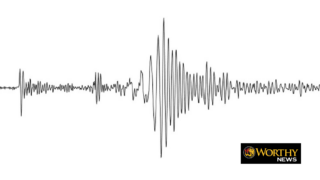Massive Quake Off Russia Triggers Tsunami Warnings, Casualties and Evacuations Across Pacific
By Stefan J. Bos, Worthy News Europe Bureau Chief

PETROPAVLOVSK-KAMCHATSKY / HONOLULU / TOKYO (Worthy News) – One of the most powerful earthquakes ever recorded struck off the eastern coast of Russia on Wednesday, triggering tsunami warnings and mass evacuations from Japan and Hawaii to Chile and the U.S. West Coast.
The magnitude-8.8 earthquake hit at a shallow depth of 12 miles (19.3 kilometers) and was centered 78 miles (126 kilometers) southeast of Petropavlovsk-Kamchatsky, a city on Russia’s Kamchatka Peninsula. The quake also triggered a violent eruption of the Klyuchevskoy volcano near the epicenter.
Russian authorities reported waves of up to 4 meters (13 feet) hitting coastal areas, particularly in the remote eastern region of Kamchatka. In the town of Severo-Kurilsk, about 215 miles (346 kilometers) southwest of the epicenter, waves submerged a fishing plant and reached as far as the local World War II monument, some 400 meters (1,312 feet) inland.
“All the people are in the tsunami safety zone,” said Mayor Alexander Ovsyannikov, adding that an hour’s warning allowed for a complete evacuation.
Regional Health Minister Oleg Melnikov said several people were injured during the initial shock. “People were hurt while running outside and one patient jumped out of a window. A woman was also injured inside the new airport terminal,” he recalled. “All patients are currently in satisfactory condition.”
Governor Vladimir Solodov described the quake as “serious and the strongest in decades of tremors,” noting damage to infrastructure, including a kindergarten.
In Japan, a 58-year-old woman died when her car veered off a cliff as she tried to flee to higher ground. The country’s meteorological agency recorded waves of up to 1.3 meters (4.3 feet) along its Pacific coast, ordering evacuations for over 900,000 people in 133 municipalities.
HIGHER GROUND
“Those near the coast should evacuate immediately to higher ground or safe buildings,” said Japan’s chief cabinet secretary Yoshimasa Hayashi, warning that second and third tsunami waves can be even higher.
The Fukushima nuclear plant, site of the 2011 meltdown, was briefly evacuated. No abnormalities were reported.
In French Polynesia, waves were expected to reach up to 4 meters, though later revised to 2.5 meters (8.2 feet) in the Marquesas Islands, more than 5,000 miles (8,000 kilometers) from the epicenter. In Chile, authorities raised their tsunami alert to the highest level and evacuated hundreds along the coast.
On the U.S. island of Maui, part of the Hawaiian archipelago, sirens and phone alerts blared, warning of possible incoming waves within three hours. Roger Pleasanton, a local bagpipe player and resident of the island’s highlands, told Britain’s broadcaster BBC, “At least we know it’s working. The emergency services are working… I was going to go to the grocery store, but I think I may have to skip the groceries and get out of here.”
He recalled that sirens did not work when he performed at sunset at Fleetwood’s, a bar owned by musician Mick Fleetwood, which was destroyed in the 2003 Maui wildfires.
Pleasanton spoke while the U.S. National Tsunami Warning Center issued alerts for California, Oregon, Washington, and Alaska, including parts of the Aleutian Islands and Panhandle. By late Wednesday, most of those warnings had been canceled after only minor wave surges were recorded.
The Pacific Tsunami Warning Center said waves between 1 and 3 meters (3 to 10 feet) were possible across coastal areas of Hawaii, Japan, Chile, Ecuador, and the Solomon Islands.
STRONG QUAKE
Experts say the quake ranks as one of the top ten strongest ever recorded.
According to the U.S. Geological Survey, it is the sixth-most powerful earthquake, after the 2010 Biobío quake in Chile and the 1906 Esmeraldas quake in Ecuador.
Both caused devastating tsunamis and loss of life.
“This earthquake ranks among the ten most severe in recorded history,” confirmed Helen Janiszewski, Assistant Professor of Geophysics at the University of Hawaii.
Russia’s Far East and the Kamchatka Peninsula lie along the Pacific “Ring of Fire”, a highly active tectonic zone prone to powerful earthquakes and volcanic eruptions.
Earlier this month, five significant quakes shook the same region—one reaching magnitude 7.4.
💡 Did you know? One of the best ways you can support Worthy News is by simply leaving a comment and sharing this article.
📢 Social media algorithms push content further when there’s more engagement — so every 👍 like, 💬 comment, and 🔄 share helps more people discover the truth. 🙌
Latest Worthy News
If you are interested in articles produced by Worthy News, please check out our FREE sydication service available to churches or online Christian ministries. To find out more, visit Worthy Plugins.
